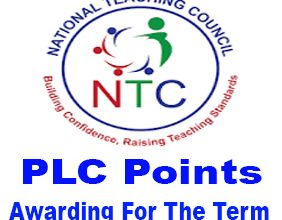NTC Pedagogy For Primary And JHS Questions And Answers (Differentiated And Scaffolding)
NTC Pedagogy For Primary And JHS Questions And Answers
NTC Pedagogy For Primary And JHS Questions And Answers (Differentiated And Scaffolding)
NTC Pedagogy For Primary And JHS Questions And Answers (Curriculum)
NTC Pedagogy For Primary And JHS Questions And Answers (Methods Of Teaching Primary And JHS) 1
NTC Pedagogy For Primary And JHS Questions And Answers (Methods Of Teaching Primary And JHS) 2
JOIN OUR WHATSAPP PAGE HERE
- Which educational approach acknowledges and addresses the diverse learning needs, interests, and abilities of students in a classroom?
a. Differentiated learning
b. Traditional learning
c. Uniform learning
d. Standardized learning
2. What is the key principle of differentiated learning?
a. One-size-fits-all approach
b. Fixed grouping
c. Assessing only prior knowledge
d. Customizing learning experiences
3. What is the purpose of flexible grouping in differentiated learning?
a. Encouraging competition among students
b. Promoting individualized instruction
c. Eliminating collaboration opportunities
d. Fostering a rigid classroom structure
4. Which type of differentiation focuses on adjusting the content or subject matter to match students’ readiness levels, interests, and learning styles?
a. Content differentiation
b. Process differentiation
c. Product differentiation
d. Environmental differentiation
5. Which type of differentiation involves modifying the instructional methods, strategies, and activities to accommodate students’ diverse learning styles, preferences, and readiness levels?
a. Content differentiation
b. Process differentiation
c. Product differentiation
d. Environmental differentiation
6. What does product differentiation in differentiated learning refer to?
a. Adjusting the content based on student readiness levels
b. Modifying instructional methods and activities
c. Allowing students to showcase their understanding in different ways
d. Adapting the physical classroom environment
7. Which type of differentiation involves adapting the physical classroom environment to support diverse learning needs?
a. Content differentiation
b. Process differentiation
c. Product differentiation
d. Environmental differentiation
8. What is the purpose of flexible seating in differentiated learning?
a. Encouraging students to work individually all the time
b. Creating a comfortable learning environment
c. Limiting student movement and interaction
d. Promoting a standardized classroom layout
NTC Pedagogy For Primary And JHS Questions And Answers (Differentiated And Scaffolding)
NTC Pedagogy For Primary And JHS Questions And Answers (Curriculum)
NTC Pedagogy For Primary And JHS Questions And Answers (Methods Of Teaching Primary And JHS) 1
NTC Pedagogy For Primary And JHS Questions And Answers (Methods Of Teaching Primary And JHS) 2
JOIN OUR WHATSAPP PAGE HERE
9. What does assessment differentiation in differentiated learning involve?
a. Modifying instructional strategies based on student interests
b. Adapting the physical classroom environment for different learning styles
c. Tailoring assessment methods to accommodate diverse learning needs
d. Adjusting the content to match student readiness levels
10. Which type of differentiation allows students to demonstrate their understanding and skills through various modes of expression?
a. Content differentiation
b. Process differentiation
c. Product differentiation
d. Environmental differentiation
11. Which type of differentiation refers to grouping students based on their specific learning needs, interests, or readiness levels?
a. Content differentiation
b. Process differentiation
c. Product differentiation
d. Flexible grouping
12. What is the purpose of time differentiation in differentiated learning?
a. Providing additional time, support, or extension activities for students
b. Standardizing the pacing of instruction for all students
c. Eliminating flexibility in the classroom schedule
d. Assigning uniform deadlines for all students
13. Which approach recognizes that students learn at different paces and allows for flexible timelines and pacing?
a. Differentiated learning
b. Traditional learning
c. Uniform learning
d. Standardized learning
14. What is the main benefit of differentiated learning?
a. Promoting competition among students
b. Creating a one-size-fits-all learning environment
c. Tailoring instruction to meet individual student needs
d. Fostering a rigid classroom structure
15. In differentiated learning, what role does student choice play?
a. Students have no say in their learning activities.
b. Students have limited options for demonstrating their understanding.
c. Students are actively involved in making decisions about their learning.
d. Students must follow a standardized curriculum.
16. Differentiated learning is based on the belief that:
a. All students learn at the same pace.
b. Students have identical learning styles.
c. One instructional approach fits all students.
d. Students have diverse learning needs and abilities.
17. How does differentiated learning promote student engagement?
a. By using a one-size-fits-all approach
b. By ignoring students’ interests and preferences
c. By tailoring instruction to individual needs and interests
d. By focusing only on rote memorization
NTC Pedagogy For Primary And JHS Questions And Answers (Differentiated And Scaffolding)
NTC Pedagogy For Primary And JHS Questions And Answers (Curriculum)
NTC Pedagogy For Primary And JHS Questions And Answers (Methods Of Teaching Primary And JHS) 1
NTC Pedagogy For Primary And JHS Questions And Answers (Methods Of Teaching Primary And JHS) 2
JOIN OUR WHATSAPP PAGE HERE
18. What does process differentiation in differentiated learning involve?
a. Adjusting the content based on student readiness levels
b. Modifying instructional methods and activities
c. Allowing students to showcase their understanding in different ways
d. Adapting the physical classroom environment
19. Which type of differentiation focuses on modifying instructional methods, strategies, and activities?
a. Content differentiation
b. Process differentiation
c. Product differentiation
d. Environmental differentiation
20. Differentiated learning emphasizes the importance of:
a. Uniform instruction for all students
b. Ignoring students’ diverse needs and abilities
c. Personalizing instruction for individual students
d. Eliminating student choice in the learning process
21. What is the role of ongoing support in differentiated learning?
a. Providing additional challenges to advanced students only
b. Offering continuous feedback and guidance to all students
c. Ignoring students who are struggling
d. Discouraging self-reflection and self-assessment
22. What is the purpose of learning contracts in differentiated learning?
a. Assigning the same tasks to all students
b. Customizing learning experiences for each student
c. Providing rigid guidelines for all students
d. Eliminating student choice in the learning process
23. Which type of differentiation focuses on adjusting the materials, resources, and learning activities to address students’ diverse learning needs and interests?
a. Content differentiation
b. Process differentiation
c. Product differentiation
d. Environmental differentiation
24. What is the main goal of flexible grouping in differentiated learning?
a. Segregating students based on ability levels
b. Reducing collaboration and interaction among students
c. Creating an inclusive learning environment
d. Providing the same instruction to all students
NTC Pedagogy For Primary And JHS Questions And Answers (Differentiated And Scaffolding)
NTC Pedagogy For Primary And JHS Questions And Answers (Curriculum)
NTC Pedagogy For Primary And JHS Questions And Answers (Methods Of Teaching Primary And JHS) 1
NTC Pedagogy For Primary And JHS Questions And Answers (Methods Of Teaching Primary And JHS) 2
JOIN OUR WHATSAPP PAGE HERE
25. Differentiated learning requires teachers to:
a. Ignore students’ diverse needs and abilities
b. Provide a standardized curriculum for all students
c. Personalize instruction based on individual student needs
d. Adopt a one-size-fits-all instructional approach
26. Which term describes an instructional approach that provides temporary support and guidance to learners?
a) Scaffolding learning
b) Zone of Proximal Development
c) Gradual Release of Responsibility
d) Collaborative learning
Answer: a) Scaffolding learning
27. Which psychologist introduced the concept of scaffolding learning?
a) Jean Piaget
b) Lev Vygotsky
c) B.F. Skinner
d) Albert Bandura
Answer: b) Lev Vygotsky
28. What does ZPD stand for in scaffolding learning?
a) Zone of Personal Development
b) Zone of Potential Development
c) Zone of Proximal Development
d) Zone of Pedagogical Development
Answer: c) Zone of Proximal Development
29. Which scaffolding approach involves the teacher verbally expressing their thought process while completing a task?
a) Modeling
b) Guided Practice
c) Gradual Release of Responsibility
d) Think Aloud
Answer: d) Think Aloud
NTC Pedagogy For Primary And JHS Questions And Answers (Differentiated And Scaffolding)
NTC Pedagogy For Primary And JHS Questions And Answers (Curriculum)
NTC Pedagogy For Primary And JHS Questions And Answers (Methods Of Teaching Primary And JHS) 1
NTC Pedagogy For Primary And JHS Questions And Answers (Methods Of Teaching Primary And JHS) 2
JOIN OUR WHATSAPP PAGE HERE
30. What does the gradual release of responsibility in scaffolding learning entail?
a) Gradually transferring responsibility from the teacher to the learner
b) Gradually reducing the amount of scaffolding support provided
c) Gradually increasing the complexity of tasks
d) Gradually shifting from explicit instruction to guided practice
Answer: a) Gradually transferring responsibility from the teacher to the learner
31. Which scaffolding approach involves the use of visual tools to represent and organize information?
a) Questioning
b) Modeling
c) Graphic Organizers and Visual Aids
d) Peer Collaboration
Answer: c) Graphic Organizers and Visual Aids
32. In scaffolding learning, what is the purpose of questioning?
a) To provide explicit instruction
b) To encourage critical thinking and reflection
c) To demonstrate problem-solving strategies
d) To assess learners’ prior knowledge
Answer: b) To encourage critical thinking and reflection
33. Which scaffolding approach involves learners working together in pairs or small groups?
a) Modeling
b) Guided Practice
c) Gradual Release of Responsibility
d) Peer Collaboration
Answer: d) Peer Collaboration
NTC Pedagogy For Primary And JHS Questions And Answers (Differentiated And Scaffolding)
NTC Pedagogy For Primary And JHS Questions And Answers (Curriculum)
NTC Pedagogy For Primary And JHS Questions And Answers (Methods Of Teaching Primary And JHS) 1
NTC Pedagogy For Primary And JHS Questions And Answers (Methods Of Teaching Primary And JHS) 2
JOIN OUR WHATSAPP PAGE HERE
34. What is the role of feedback in scaffolding learning?
a) To assess learners’ prior knowledge
b) To demonstrate problem-solving strategies
c) To gradually reduce support
d) To guide learners towards their learning goals
Answer: d) To guide learners towards their learning goals
35. Which scaffolding approach focuses on the gradual reduction of support as learners gain proficiency?
a) Modeling
b) Gradual Release of Responsibility
c) Guided Practice
d) Think Aloud
Answer: b) Gradual Release of Responsibility
36. Which scaffolding approach involves the teacher providing step-by-step instructions and demonstrations?
a) Modeling
b) Questioning
c) Peer Collaboration
d) Think Aloud
Answer: a) Modeling
37. What does Vygotsky’s sociocultural theory emphasize in scaffolding learning?
a) The role of social interaction in cognitive development
b) The importance of individual exploration and discovery
c) The influence of reinforcement and punishment
d) The significance of hereditary factors in learning
Answer: a) The role of social interaction in cognitive development
38. Which scaffolding approach involves the teacher providing structured and supported practice opportunities?
a) Guided Practice
b) Graphic Organizers and Visual Aids
c) Peer Collaboration
d) Gradual Release of Responsibility
Answer: a) Guided Practice
NTC Pedagogy For Primary And JHS Questions And Answers (Differentiated And Scaffolding)
NTC Pedagogy For Primary And JHS Questions And Answers (Curriculum)
NTC Pedagogy For Primary And JHS Questions And Answers (Methods Of Teaching Primary And JHS) 1
NTC Pedagogy For Primary And JHS Questions And Answers (Methods Of Teaching Primary And JHS) 2
JOIN OUR WHATSAPP PAGE HERE
39. What is the purpose of scaffolding learning?
a) To make tasks easier for learners
b) To provide long-term support to learners
c) To foster independence and skill development
d) To eliminate the need for teacher intervention
Answer: c) To foster independence and skill development
40. Which scaffolding approach encourages learners to think about their thinking and learning process?
a) Questioning
b) Feedback and Reflection
c) Guided Practice
d) Modeling
Answer: b) Feedback and Reflection
41. What does the Zone of Proximal Development refer to in scaffolding learning?
a) Tasks that learners can accomplish independently
b) The range of tasks learners can complete with support
c) The highest level of task difficulty learners can achieve
d) The level of task difficulty beyond learners’ reach
Answer: b) The range of tasks learners can complete with support
42. Which scaffolding approach involves breaking down complex tasks into smaller, manageable components?
a) Peer Collaboration
b) Modeling
c) Gradual Release of Responsibility
d) Chunking and Breaking Down Tasks
Answer: d) Chunking and Breaking Down Tasks
NTC Pedagogy For Primary And JHS Questions And Answers (Differentiated And Scaffolding)
NTC Pedagogy For Primary And JHS Questions And Answers (Curriculum)
NTC Pedagogy For Primary And JHS Questions And Answers (Methods Of Teaching Primary And JHS) 1
NTC Pedagogy For Primary And JHS Questions And Answers (Methods Of Teaching Primary And JHS) 2
JOIN OUR WHATSAPP PAGE HERE
43. What type of support does scaffolding learning provide to learners?
a) Temporary and tailored support
b) Permanent and fixed support
c) Passive and independent support
d) Rigid and inflexible support
Answer: a) Temporary and tailored support
44. Which scaffolding approach involves the teacher asking strategic questions to guide learners’ thinking?
a) Think Aloud
b) Modeling
c) Questioning
d) Guided Practice
Answer: c) Questioning
45. Which scaffolding approach involves learners working collaboratively to support and learn from each other?
a) Think Aloud
b) Modeling
c) Peer Collaboration
d) Gradual Release of Responsibility
Answer: c) Peer Collaboration
46. Which scaffolding approach focuses on gradually withdrawing support as learners gain proficiency?
a) Modeling
b) Think Aloud
c) Gradual Release of Responsibility
d) Graphic Organizers and Visual Aids
Answer: c) Gradual Release of Responsibility
47. Which scaffolding approach helps learners visualize and organize information using diagrams and charts?
a) Graphic Organizers and Visual Aids
b) Guided Practice
c) Questioning
d) Feedback and Reflection
Answer: a) Graphic Organizers and Visual Aids
NTC Pedagogy For Primary And JHS Questions And Answers (Differentiated And Scaffolding)
NTC Pedagogy For Primary And JHS Questions And Answers (Curriculum)
NTC Pedagogy For Primary And JHS Questions And Answers (Methods Of Teaching Primary And JHS) 1
NTC Pedagogy For Primary And JHS Questions And Answers (Methods Of Teaching Primary And JHS) 2
JOIN OUR WHATSAPP PAGE HERE
48. What is the primary goal of scaffolding learning?
a) To provide immediate answers to learners’ questions
b) To challenge learners with tasks beyond their abilities
c) To foster independent and self-regulated learning
d) To limit learners’ engagement in collaborative activities
Answer: c) To foster independent and self-regulated learning
49. Which scaffolding approach involves the teacher providing step-by-step instructions and demonstrations?
a) Modeling
b) Gradual Release of Responsibility
c) Guided Practice
d) Think Aloud
Answer: a) Modeling
50. What is the purpose of collaborative learning in scaffolding?
a) To foster independence and self-regulation
b) To provide explicit instruction and guidance
c) To encourage critical thinking and peer interaction
d) To replace teacher-led instruction entirely
Answer: c) o encourage critical thinking and peer interaction
NTC Pedagogy For Primary And JHS Questions And Answers (Differentiated And Scaffolding)
NTC Pedagogy For Primary And JHS Questions And Answers (Curriculum)
NTC Pedagogy For Primary And JHS Questions And Answers (Methods Of Teaching Primary And JHS) 1
NTC Pedagogy For Primary And JHS Questions And Answers (Methods Of Teaching Primary And JHS) 2
JOIN OUR WHATSAPP PAGE HERE
51. What does the Zone of Proximal Development (ZPD) refer to?
a) The range of topics covered in a curriculum
b) The gap between a learner’s current knowledge and potential development
c) The level of support provided by parents in a child’s learning
d) The distance between a school and a student’s home
52. Which of the following is NOT a learning style mentioned in the content?
a) Visual learners
b) Auditory learners
c) Reflective learners
d) Kinesthetic learners
53. According to Vygotsky’s theory, learning is influenced by:
a) Individual abilities only
b) Cultural context and social interaction
c) Learning styles and preferences
d) Intelligence quotient (IQ)
54. What is the main implication of Vygotsky’s theory in the classroom?
a) Emphasizing independent learning without social interaction
b) Focusing solely on individual student needs
c) Promoting collaborative learning and social interaction
d) Ignoring cultural diversity in instruction
55. Scaffolding in the classroom refers to:
a) Providing physical structures for students to climb
b) Offering support and guidance to help students achieve higher levels of understanding
c) Assigning extensive homework assignments
d) Organizing classroom materials and resources
Fill In: Questions and Answers
56. The Zone of Proximal Development (ZPD) emphasizes the gap between a learner’s current level of knowledge and their potential level of development with the assistance of a ____________.
Answer: More knowledgeable individual (teacher/peer)
57. ______________ learners prefer to process information through visual aids such as charts, graphs, and diagrams.
Answer: Visual learners
58. Vygotsky’s theory highlights the importance of social interaction, scaffolding, cultural context, and ______________ in the learning process.
Answer: Language
59. In the classroom, teachers can provide scaffolding by breaking complex tasks into ______________ steps.
Answer: Manageable
60. Differentiated instructional approaches involve tailoring teaching methods, materials, and assessments to meet the ______________ needs of students.
Answer: Diverse
NTC Pedagogy For Primary And JHS Questions And Answers (Differentiated And Scaffolding)
NTC Pedagogy For Primary And JHS Questions And Answers (Curriculum)
NTC Pedagogy For Primary And JHS Questions And Answers (Methods Of Teaching Primary And JHS) 1
NTC Pedagogy For Primary And JHS Questions And Answers (Methods Of Teaching Primary And JHS) 2
JOIN OUR WHATSAPP PAGE HERE
True or False: Questions and Answers
True or False: The Zone of Proximal Development (ZPD) focuses on the gap between a learner’s current knowledge and potential development.
Answer: True
True or False: According to Vygotsky’s theory, social interaction plays a minimal role in the learning process.
Answer: False
True or False: Differentiated instructional approaches aim to provide a one-size-fits-all approach to teaching.
Answer: False
True or False: Visual learners prefer processing information through auditory means such as lectures and discussions.
Answer: False
True or False: Vygotsky’s theory suggests that cultural context has no impact on learning.
Answer: False
NTC Pedagogy For Primary And JHS Questions And Answers (Differentiated And Scaffolding)
NTC Pedagogy For Primary And JHS Questions And Answers (Curriculum)
NTC Pedagogy For Primary And JHS Questions And Answers (Methods Of Teaching Primary And JHS) 1
NTC Pedagogy For Primary And JHS Questions And Answers (Methods Of Teaching Primary And JHS) 2
JOIN OUR WHATSAPP PAGE HERE
Related Searches:
NTC Past Question On Pedagogy Of Primary And JHS, Questions and answers on scaffolding for NTC exams, Questions and answers on method of teaching in Ghana, NTC sample questions on Content Areas, NTC GTLE Content Areas questions and answers, Pedagogy For Primary And JHS questions and answers from NTC, NTC PEDAGOGY FOR PRIMARY AND JHS sample questions and answers, New NTC questions and answers for 2023 Ntc Concept of Differentiated learning and Scaffolding, Differentiated approaches or types Learning styles, Zone of proximal development, Analyze Lev Vygotsky’s theory and its implication in the classroom Identify the various learning styles of learners. Questions And Answers On Differentiation learning pdf NTC GTLE Content Areas questions and answers Questions And Answers On Scaffolding learning pdf NTC GTLE Content Areas questions and answers Questions And Answers On Explain the concept differentiated lemming and scaffolding. NTC GTLE Content Areas questions and answers Questions And Answers On Differentiate between the various types of differentiated learning. NTC GTLE Content Areas questions and answers Questions And Answers On Outline the types of scaffolding. NTC GTLE Content Areas questions and answers Questions And Answers On Demonstrate understanding and the use of differentiated instructional approaches in diverse learning environment NTC GTLE Content Areas questions and answers Questions And Answers On Identify the various learning styles of learners. NTC GTLE Content Areas questions and answers Questions And Answers On Analyze Lev Vygotsky’s theory and its implication in the classroom. NTC GTLE Content Areas questions and answers Questions And Answers On Zone of proximal development NTC GTLE Content Areas questions and answers







4 Comments